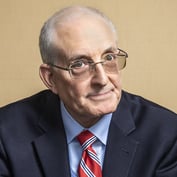(Chicago) — The topic of the DOL fiduciary rule was front and center at the LIMRA Annual Conference, happening now in Chicago.
Speaking at the session, “From advocacy to compliance: Moving to a post-suitability DOL fiduciary world” were:
-
- Jon Breyfogle, principal, Groom Law Group (moderator)
- Stephanie Napier, senior counsel, ERISA & Fiduciary Services, Vanguard (speaker)
- Jamie Whetzel, vice president and general counsel, USAA Life Insurance Company (speaker)
- Tom Zurek, executive vice president, general counsel and secretary, OneAmerica Financial Partners (speaker)
As we know, there are three parts to the DOL fiduciary rule: the fiduciary definition, exceptions to the rule, and the BIC (best interest contract) and other exemptions.
Breyfogle alerted the audience that the DOL is going to issue subregulatory guidance, which could start coming out in the near future. He urged those in attendance to watch the DOL’s website regularly.
“They’re likely to say some important things but they cannot rewrite the rule” he said. “They’re going to be able to interpret aspects of the rule but they can’t change it.”
He also mentioned he has little faith that the current litigation against the DOL and the rule will have any impact — noting he’s “not counting on it.”
Breyfogle: Jamie, talk about the challenges you and your colleagues at USAA face with DOL implementations.
Whetzel: We’ve been engaged with this rule for a very long time. Even with a simple product base with no commissions — like us at USAA — there can still be challenges with dealing with the DOL rule.
In our comment letter we talked about the fact that lower-balance accounts will potentially be squeezed out of the market. That has proven to be correct. Our advocacy then moved into a phase of focused project work. We’re not looking at the courts to solve our problems. We believe we will see an effective date in April and then in the final implementation in January of next year.
Napier: When we looked at the rule we tried to determine where we were acting as a fiduciary already. It quickly became clear that that type of analysis could get complex fast. Do we want to make what was previously a non-fiduciary activity a fiduciary activity?
Do we want to become a fiduciary in the future? If so, do we want to build out the compliance structure? Really the thing I think became clear quickly was whatever decision we decided to go with, we were going to need to beef up training and compliance. Employees need to understand what they need to do. If you decide to become a fiduciary, advisors need to understand what to do. The BIC exemption is one of the primary things people are focused on but it’s not the only choice in this space. There’s the Pension Protection Act. There are also ways to avoid conflicts entirely, such as using third parties.
Related: Ward Group: Top 50 life insurers for 2016
Zurek: The way we approached the problem was by mid-summer 2015 I had come to the conclusion that we really weren’t advancing the ball. We needed a robust examination of precisely what our business is and what the rule means for us. We needed a fresh examination of our products, our distribution and the direction we wanted to move in.
We started to view this as being quite opportunistic. This type of in-depth examination allowed us to have a more focused view as to — directionally — what we were going to be doing. We worked with Oliver Wyman. We had over 50 different business aspects we needed to examine.
I’m bullish on the fact that I think we’re moving in the right direction for our company.

Insurance experts say that even with a simple product base with no commissions, there will still be compliance challenges in dealing with the DOL rule. (Photo: iStock)
Breyfogle: That’s a great observation. How many of our [law firm] clients are rethinking their business and thinking about what makes sense in light of this rule? Really, senior executive involvement is definitely something that’s a good thing and extremely important.
Whetzel: One of the first things we did was team up with a law firm. There’s a huge opportunity for lawyers here — might not be good news for everyone else in the audience who isn’t a lawyer, but for lawyers, it is. Jon, for you as an ERISA lawyer, this is the Super Bowl for you.
Joking aside, the complicated nature of this rule and the intricacies of providing advice — those sorts of things are going to have the effect of making people leave the market. The challenge is people being able to provide advice to their customers and to place their product in the hands of the people that need them. There’s a tremendous market niche that’s going to need to be filled. Investors will continue to need advice.
If you can solve the complexity of the rule, there’s a huge opportunity there.
Related: What does it mean to be a fiduciary?
Napier: I think there’s already been a fair amount of disruption in the industry going on before the DOL finalized the rule. I think those things continuing to happen alongside this rule, it’s very difficult to predict what’s going to happen.
For proprietary investment products, this rule makes it difficult to provide advice when you have these products. When you believe you have the best in the market, it’s difficult to be in this position.








 October 25, 2016 at 07:50 AM
October 25, 2016 at 07:50 AM










